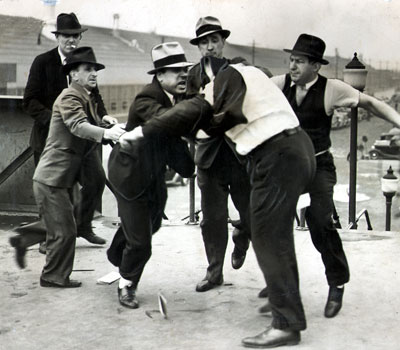The talk and rumours amongst Ontario Fire Fighters are about leaving (disaffiliating) separating from the O.P.F.F.A. or creating another Fire-Fighting union in Ontario. During court proceedings, lawyer Agarwal and O.P.F.F.A. President Hyndman (documented in Hyndman’s testimony) stated to the courtroom that the “11,000 fire members strongly support this lawsuit”. Which many are now stating is an incorrect statement. Many members of the O.P.F.F.A. were not informed by their local executives about the launching of this lawsuit in 2016 and have just been made aware of the lawsuit against Colin Grieves and Paul Atkinson by posts on BURNING SHENANIGANS. Many members do not agree with the O.P.F.F.A. and lawyer Agarwal and do not support the lawsuit in any form. Many members are unsure how much this lawsuit has cost the O.P.F.F.A. so far. How the O.P.F.F.A. is paying for the lawsuit without continuing to use money from the Occupational Disease Committee Fund and without continuing to raise union dues.


Good resource to speak to is Patrick Defazio. In the 1980s Pat Defazio was instrumental in the union separation from the International Association of Fire Fighters (I.A.F.F). His goal was to create the Canadian Association of Fire Fighters (C.A.F.F). His goal was to become the president of CAFF, an umbrella organization for Canada, totally separate from the IAFF.
Defazio put a motion to separate, unfortunately, thousands did not agree with his vision, which resulted in dividing the OPFFA with the additional creation of Provincial Federation of Ontario Fire Firefighters (P.F.O.F.F). Which resulted in a more professional organization.
Although I did not see eye to eye with some of Pats viewpoints on several things, like his disregard to represent Firefighter retirees who were suffering or had succumbed to various forms of occupational cancers as he said “we don’t represent none due paying retirees”, many firefighters felt he was ambitious in aiding in separating from the OPFFA.
In the 1990s under the leadership of Patrick Defazio the OPFFA found themselves in financial difficulties. Realizing this, they approached P.F.O.F.F. to join forces again. Defazio did not want to amalgamate with PFOFF, however to intice Defazio to get on board to join with P.F.O.F.F, after his failed attempt the OPFFA bargained with Defazio to name a Health and Safety award after him, give him President Emeritus of OPFFA and would give PFOFF president Bruce Carpender the 13th District VP position within the IAFF.
The OPFFA under Bruce Carpender brought financial success back to OPFFA.
Pat Defazio would be a good tool for discussions in separating from O.P.F.F.A.
Frank Ramagnano voted against indexing.
Below is the CUPE explanation of indexing. They voted FOR indexing for their members.
Why is a firefighter appointed by OPFFA voting against indexing that benefits its members?
I’m confused. Help me understand.
This proposal would remove indexing as of 2025 until the pension plan meets specific conditions – some of which will be decided at a later date, behind closed doors and based on a financial management strategy that has not even been created yet.
Though they have yet to clearly define the specific conditions, some of what they seem to be proposing is:
Indexing would continue only when OMERS is above 105% fully funded AND that the implementation of indexing wouldn’t cause the plan to go below 105% fully funded.
In other words, the plan would have to be approximately 108-109% funded for plan members to receive indexing.
Today OMERS is funded at 94 % and given that the plan is on target to be fully funded in 2025, it will likely take several more years to reach the 109% mark – if that is even possible.
This means that after 2025 it will be impossible for members to know when or if they will receive indexing, which is a huge loss of pension security.
Taken together, all three of these proposed changes represent a significant financial loss to OMERS pensioners. We have people working on the exact calculations of what this will mean for you and your fellow members, but based on what we know so far, it would be somewhere in the ball park of 20% overall loss in guaranteed benefits going forward.
It is important to note that these are all employer-friendly changes. They have chosen to propose cuts to your benefits rather than look at the possibility of a small increase to employer contribution rates.
As I understand, the opffa slid through a little known use of our union dues. In 2016, before the convention, the executive dedicated money per capita for a liability fund from each member. The fund now pays the legal bills, but by creating it, it opens up every member paying a share of any liability.
Now how could the opffa be subject to a liability? Can you say counter claim by Atkinson and Grieve?
Another stunning move by the opffa.